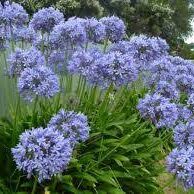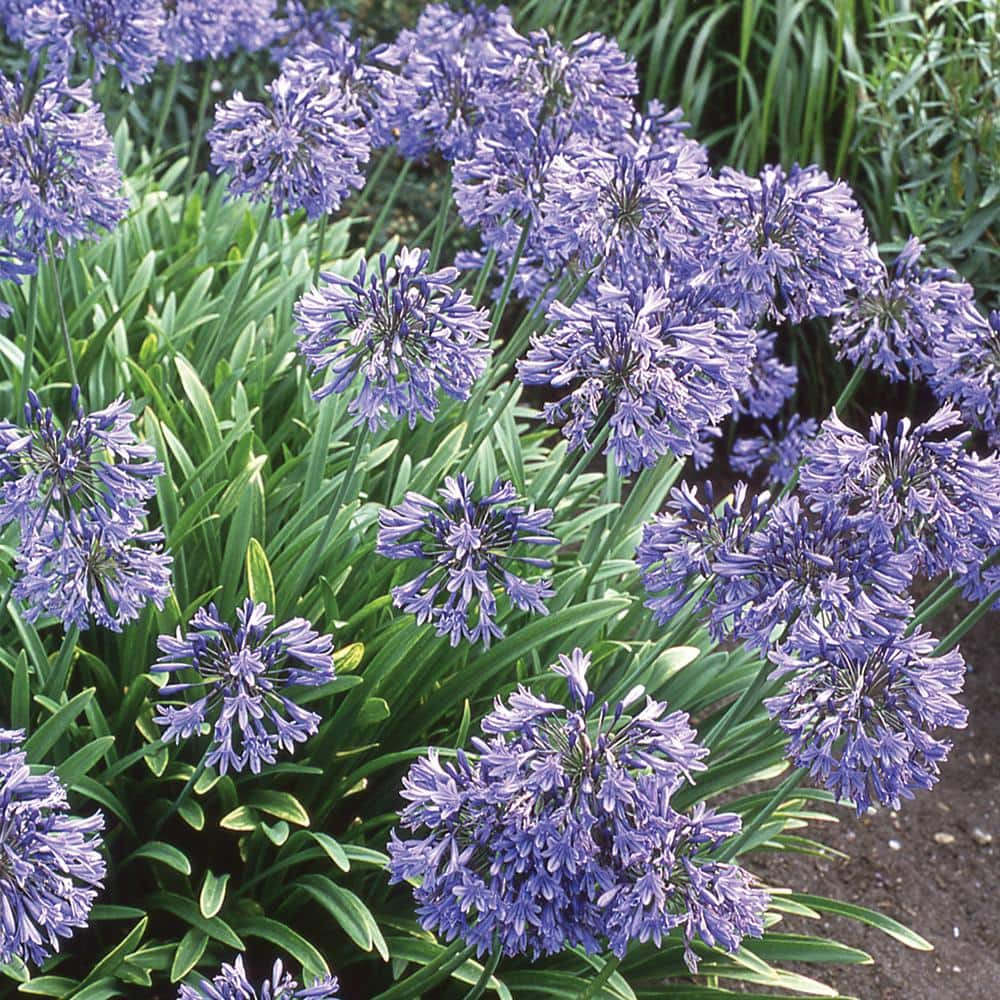Sensational Agapanthus: Enhancing Your Garden's Appeal
Sensational Agapanthus: Enhancing Your Garden's Appeal
Blog Article
Unleashing the Secret to Effective Agapanthus Farming: Tips and Techniques for a Flourishing Yard
In the realm of horticulture, cultivating agapanthus successfully requires a strategic technique that includes various facets of plant treatment. By understanding the nuances of agapanthus growing, one can produce an atmosphere where these plants flourish and flower abundantly.
Growing Agapanthus: Best Practices
When planting Agapanthus, appropriate dirt prep work is necessary for making sure successful growth and development of these attractive flowers. Agapanthus, generally recognized as Lily of the Nile or African lily, thrives in well-draining soil with a somewhat acidic to neutral pH level - Agapanthus. Before planting, it is crucial to amend hefty clay dirts with raw material such as compost or peat moss to enhance water drainage and offer vital nutrients for the plants
To grow Agapanthus, choose an area that gets complete sunlight to partial shade, as this will advertise healthy development and plentiful flowering. Dig an opening two times the diameter of the plant's root ball and place the Agapanthus at the same depth it was previously expanding. Delicately backfill the hole with dirt, pressing down firmly to eliminate any air pockets around the origins.
Water the recently grown Agapanthus extensively and remain to keep the soil equally damp, specifically throughout the plant's energetic growing season. Agapanthus. Using a balanced fertilizer once a month can further support the plant's development and blooming. By following these finest methods for planting Agapanthus, you can develop a sensational display of these captivating flowers in your garden
Perfect Soil Conditions for Agapanthus
For ideal growth and blooming success of Agapanthus plants, making sure the soil problems are optimal is important. Agapanthus thrives in well-draining soil with a slightly acidic to neutral pH degree ranging from 6.0 to 7.0. This sort of dirt permits ample water drainage, stopping waterlogging which can bring about root rot. To enhance dirt water drainage, take into consideration adding raw material such as garden compost or peat moss when preparing the planting site. Furthermore, Agapanthus chooses soil that is abundant in nutrients, so integrating a balanced plant food throughout the growing season can advertise healthy and balanced development and dynamic flowers.

Watering and Feeding Tips
To make certain healthy growth and dynamic blooms, appropriate watering and fertilizing techniques are vital for effective Agapanthus growing. Agapanthus plants take advantage of routine watering, specifically throughout the expanding period. It is advised to water deeply when a week, making sure the soil is moist but not soaked. During warm weather condition or in pots, even more constant watering might be necessary to prevent the soil from drying out totally.
When it pertains to fertilizing Agapanthus, a well balanced fertilizer with equivalent parts nitrogen, phosphorus, and potassium can be applied in the springtime to promote healthy growth and blooming. Slow-release fertilizers are ideal for providing nutrients slowly over an extended duration. Stay clear of over-fertilizing, as this can result in extreme foliage development at the expense of flowers.
In addition, integrating organic issue like compost have a peek at these guys into the soil can enhance nutrient degrees and boost soil structure, assisting in the general wellness of the Agapanthus plants. By adhering to these watering and feeding pointers, gardeners can ensure their Agapanthus plants prosper and create magnificent displays of blossoms.
Pruning and Deadheading Techniques
Correct trimming and deadheading methods play a vital function in preserving the wellness and looks of Agapanthus plants, matching the necessary techniques of watering and fertilizing for effective farming. Trimming Agapanthus entails eliminating invested flower heads, yellowing or dead fallen leaves, and overall shaping of the plant to promote much better development. Deadheading, the procedure of eliminating discolored blossoms, not just enhances the plant's look yet likewise encourages more flowering.
When deadheading Agapanthus, it is suggested to clip off the blossom stem at the base making use of sharp, clean shears. This procedure reroutes the plant's power from seed manufacturing back right into origin and foliage growth, advertising a much healthier and a lot more durable plant. why not try this out Routine deadheading can expand the flowering period of Agapanthus and avoid self-seeding, which can bring about overcrowding.
In regards to pruning, Agapanthus typically gain from a light trim after blooming to tidy up the plant and encourage fresh growth. Cutting down the spent blossom stems and eliminating any dead or damaged foliage helps keep the plant's vigor and general look. Nonetheless, it is vital to avoid reducing into the crown of the plant, as this can weaken its health and wellness.

Protecting Agapanthus From Vermins and Diseases
Executing effective insect and condition monitoring approaches is critical to protecting the wellness and vitality of Agapanthus plants in growing. One common bug that impacts Agapanthus is the Agapanthus borer, a caterpillar that passages right into the plant, creating damages to the blossoms and fallen leaves.
Along with bugs, Agapanthus are susceptible to diseases such as origin rot and fungal leaf spots. These concerns can commonly be avoided by guaranteeing correct drainage and preventing overwatering. If indicators of illness show up, affected components of the plant ought to be immediately gotten rid of to prevent further spread. Fungicides may likewise be utilized as a treatment step, following the supplier's directions meticulously. By remaining watchful and attending to insect and disease problems quickly, garden enthusiasts can assist their Agapanthus prosper and thrive.

Verdict
To conclude, effective growing of agapanthus requires proper planting methods, ideal dirt problems, adequate watering and fertilizing, regular trimming and deadheading, and security from diseases and bugs. By adhering to these methods and tips, gardeners check my reference can make certain a prospering garden full of stunning agapanthus flowers. Agapanthus. Remember to maintain constant care and interest to information to promote the health and longevity of these magnificent plants
When planting Agapanthus, appropriate dirt preparation is essential for ensuring effective development and growth of these attractive flowers.Water the newly grown Agapanthus extensively and continue to keep the dirt evenly moist, particularly during the plant's active expanding season.For ideal development and growing success of Agapanthus plants, guaranteeing the soil conditions are excellent is critical. When transplanting or growing Agapanthus, make sure the dirt is well-prepared to offer the essential foundation for the plants to develop themselves efficiently. One typical bug that affects Agapanthus is the Agapanthus borer, a caterpillar that passages into the plant, triggering damage to the leaves and flowers.
Report this page